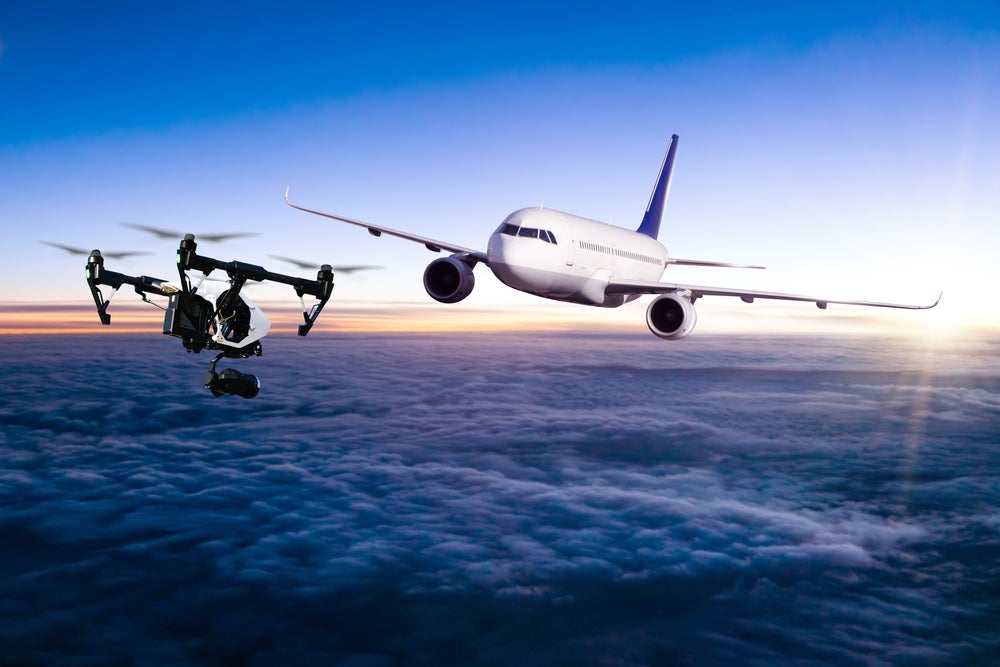
A rogue drone has caused misery for 110,000 people hoping to travel home from London ahead of Christmas, with more than 750 flights grounded after the device repeatedly flew over the runway.
Despite initial speculation suggesting that the culprit is a hobbyist, that theory has since been shot down. Cheap consumer drones only hold a charge enough for 17 to 25 minutes of flight on average, which would require the drone to regularly return to its owner for charging, exposing their location. The length of time that the disruption went on for would suggest that a professional drone, capable of staying in the air for much longer periods, was used.
Likewise, according to Nicholas Grossman, professor of international relations at the University of Illinois and author of “Drones and Terrorism”, the sustained disruption caused by the drone also suggests that multiple people were involved:
“To disrupt an airport for that long requires multiple drones, likely with multiple pilots coordinating – at least a little – because low battery life and relatively slow charging times would make it difficult for a single pilot of a single drone to do this.”
But why are incidents like this a major cause for concern for those operating in the airline industry?
Safety fears
The problem is, regardless of whether the intentions of the pilot are malicious; a drone could potentially bring down an aircraft in the event of a collision – particularly commercial drones like the one that authorities suspect has been used, which are heavier in weight.
How well do you really know your competitors?
Access the most comprehensive Company Profiles on the market, powered by GlobalData. Save hours of research. Gain competitive edge.

Thank you!
Your download email will arrive shortly
Not ready to buy yet? Download a free sample
We are confident about the unique quality of our Company Profiles. However, we want you to make the most beneficial decision for your business, so we offer a free sample that you can download by submitting the below form
By GlobalData“My biggest worry was terrorists trying to fly drones into jet engines as they were taking off or landing, creating something like an accident where birds fly into engines and crash aircraft,” Grossman said.
The issue of drones being used to carry out acts of terror was highlighted in August when an assassination attempt was made on Venezuelan President Nicolas Maduro during a military event. Two drones loaded with explosives were flown towards Maduro and detonated, resulting in seven injuries.
Sussex Police do not believe that the incident is terror-related. However, it has highlighted a lack of protection around airports and the huge impact that devices – available for as little as £25 – can have.
According to Jenny Randerson, Liberal Democrat transport spokesperson, the incident “illustrated the frightening ease with which drone vessels can inflict massive damage to our safety, our security and our economy”.
Is there a solution?
“In ‘Drones and Terrorism’, I wrote that the UK, US, and other advanced countries aren’t prepared to deal with this, and the events at Gatwick bear that out,” Grossman said.
UK law already states that it is illegal to fly a drone within 1km of an airport or airfield. Those who breach this law could face a fine of up to £2,500 or a maximum prison sentence of five years. And yet, these laws have done little to reduce the growing number of incidents involving aircrafts and drones.
In 2013, there were no reported incidents. However, that has been growing each year since and surpassed 100 incidents for the first time this year, according to the UK Airprox Board.
So what can be done to curb the problem and avoid similar incidents occurring in the future?
“It’s illegal in the UK to fly a drone within a kilometre of airports, but that evidently hasn’t stopped whoever is being this from doing it,” Grossman said.
“My recommendation in the book is electronic defences – something that can trigger a ‘return to base’ function, or just cause the drone to land. There are products like this that look kind of like big guns, but they have to be pointed at a specific drone,
Defence Secretary Gavin Williamson said that the military, which had been called in to deal with the incident, had a “range of unique capabilities” to ground the drone. However, he didn’t elaborate on what this meant.
“My hope for airports is they’ll be covered by a sort of electronic net, so drones can’t get in there in the first place,” Grossman said.
Plenty of technology companies are working on anti-drone technology that could be used to protect airports from drone incidents, including electronic fencing solutions. Last year a UK prison installed a 2,000ft “drone shield” which is capable of blocking drones from flying within its perimeter.






